Memo to Investors: Now is Hardly the Time to Dismiss Human Rights


Here’s a reality check on how people approach financial decisions during a crisis: The evidence suggests most of us are actually more careful when chaos surrounds us. Some of this behavior lies in the fundamentals of human psychology. Other aspects are just obvious, as in the fact many of us are stuck at home, rarely go out if ever and, therefore, we have more time on our hands. So here’s a word of caution for anyone sitting in a C-suite (or is now doing so virtually from home) who thinks his or her company can let some things slide due to this pandemic: Investors are still monitoring companies, perhaps even more closely now than they had before. In turn, consumers are tracking their investments the way hawks swirl airborne while they watch their prey. Furthermore, asset managers that give the short shrift to the social impacts of their investments will only hurt their companies in the long run. This stubborn reality applies to huge global problems such as human rights.
To that end, the Investor Alliance for Human Rights recently launched a toolkit with which asset owners and managers can assess how their investments could pose social risks on communities worldwide. Such a framework is even more necessary during this current crisis, as it’s been clear that we now face wider economic and social inequalities in wealthy and poorer nations alike.
Think of this overriding framework as a checklist that varies based on the role one has in the investment world. At the institutional level, for example, this framework reminds asset owners and managers of basic yet very important questions: Is your firm’s human rights policy commitment clear? What about the company's human rights governance statement? Have you done thorough due diligence so problems don’t fester? Are grievance mechanisms in place? Are the appropriate disclosures complete? The Alliance provides tools that can help those tasked with monitoring investors’ social impact and compliance, as well as examples to ensure these policies, commitments and statements are effective.
Considering the missteps that have sidetracked many companies, including those that have assumed their social responsibility commitments were effective, reviewing a firm’s human rights policies (and of course, following them) are more critical now than they were just a few months ago.
“In this global crisis, we see why investment-as-usual must change. An essential step in this process is recognizing that institutional investors, even minority shareholders, have a responsibility to address the risks to people present in their investment value chains. To do this, investors should know the human rights risks connected to their investment portfolios and show how they are taking action to manage those risks in line with globally agreed upon standards,” said Paloma Muñoz Quick, director of the Investor Alliance for Human Rights, in a public statement.
The Alliance’s toolkit is far more than something to be bookmarked. It’s also a reminder for institutional investors to brush up on ethical business standards including those within the U.N. Guiding Principles on Business and Human Rights and the OECD’s Guidelines for Multinational Enterprises.
True, more investment professionals are integrating ESG (environmental, social and governance) factors into their decisions as to how they allocate their funds, but many of them are still overlooking ESG criteria. And even if institutional investors can prove they are evaluating ESG concerns, too many of them are still overlooking the “S” in ESG. So, at a time when the novel coronavirus is often piling on its worst impact on society's most vulnerable, these human rights challenges should be top of mind now more than ever, whether they be labor rights, discrimination in any form, or child exploitation.
“Make no mistake: People are paying close attention to how companies respond — and how they treat their stakeholders when it matters most,” TriplePundit’s senior editor, Mary Mazzoni, wrote during the onset of this pandemic. That is definitely the case with the global financial industry, too.
Image credit: Tim Mossholder/Unsplash
Renewables Can Benefit from Smart Spending on Infrastructure


The United States renewables sector has continued to grow this year, even during the COVID-19 pandemic and despite not receiving aid from the federal coronavirus stimulus package.
Renewable power is forecast to hold a 21 percent share of U.S. electricity use in 2020, up from 18 percent in 2019. And it’s overtaking coal. Last year, renewables became cheaper to produce in most regions of the country. This year, nationwide renewable power is projected to surpass coal power production for the first time.
Innovation in the renewables sector currently on pause
The long-term view of renewables is looking bright, but in the meantime, much innovation and development has been put on the back burner. Already more than 40 percent of wind and solar equipment that would have been commissioned from April to the end of 2020 has been delayed, as Logan Goldie-Scot, head of clean power research at BloombergNEF recently told Yale Environment 360.
Pausing innovation and construction doesn’t bode well for renewable energy’s future growth. When activity comes back online, the systems supporting clean energy should be fine-tuned and oiled to support needed progress. During this hiatus, it’s important to take a careful look at policy frameworks and funding solutions.
A study published in Nature in February could help researchers elevate renewable energy policy and funding. The study identifies the challenges of evaluating energy innovation policies and public subsidy programs and offers solutions.
Could public funds for renewables R&D be better spent?
“It’s critical to ensure that the public resources spent on supporting innovation are not wasted. We need to design policies and support programs based on evidence of what mechanisms actually work,” Professor Jacquelyn Pless of MIT’s Sloan School of Management and leader of the research said in a press release, “This requires identifying the barriers to clean energy innovation as well as the policies and interventions for overcoming them.”
The study authors identify several key challenges researchers currently face in evaluating the effectiveness of policies and funding. They include time delays between funding and development; the lack of any standard metrics in measuring innovation within the clean energy sector; and little cohesion between various clean energy policies and programs.
Governments and agencies can overcome each of these challenges by being more deliberate in data collection and tracking, in a way, mimicking “the nature of an experiment,” Pless writes.
One strategy the paper identifies is simply noting which grant applicants are successful and non-successful. This can help researchers assess the difference between funded and non-funded firms over the short- and long-term and keep track of what technologies and solutions the innovations end up supporting.
Adding some randomization to policy and program design (where factors would have been assigned arbitrarily) can also help researchers assess outcomes more confidently. One example study the authors give is funding requirements like collaboration with companies, national laboratories or universities. In this example, randomization would help determine whether collaboration has an effect on commercialization, Pless said.
Pless and colleagues also emphasize that a one-size-fits-all approach isn’t ideal for renewable energy innovation. What works for one organization may not work for another.
Diversifying policies and programs does not, however, preclude collaboration. “All of these solutions fall under the umbrella of multiple stakeholders working together, as access to data is critical for researchers to adequately answer these questions,” Pless said in the press release.
“Overcoming these challenges could lead to a significant increase in the evidence base of policies that can successfully drive innovation in the energy sector,” she said.
A healthy renewables sector could be an engine for economic recovery
Not only can a healthy, growing and innovative clean energy sector diminish the U.S.’s greenhouse gas emissions; it could also employ some of the 26 million people who have lost jobs during the nation-wide lock-down.
Will renewable energy’s momentum last?
Research does show that demand for wind, solar and hydroelectric energy will increase this year, especially as renewable sources have lower fuel costs for generating electricity than fossil fuels. Continuing to grow and expand will require innovation, though. When researchers and engineers get back to work, they will need effective funding and supportive policies. That’s where this framework from Nature comes in.
Image credit: Ricardo Esquivel/Pexels
The Inevitability of a Sustainable COVID-19 Recovery
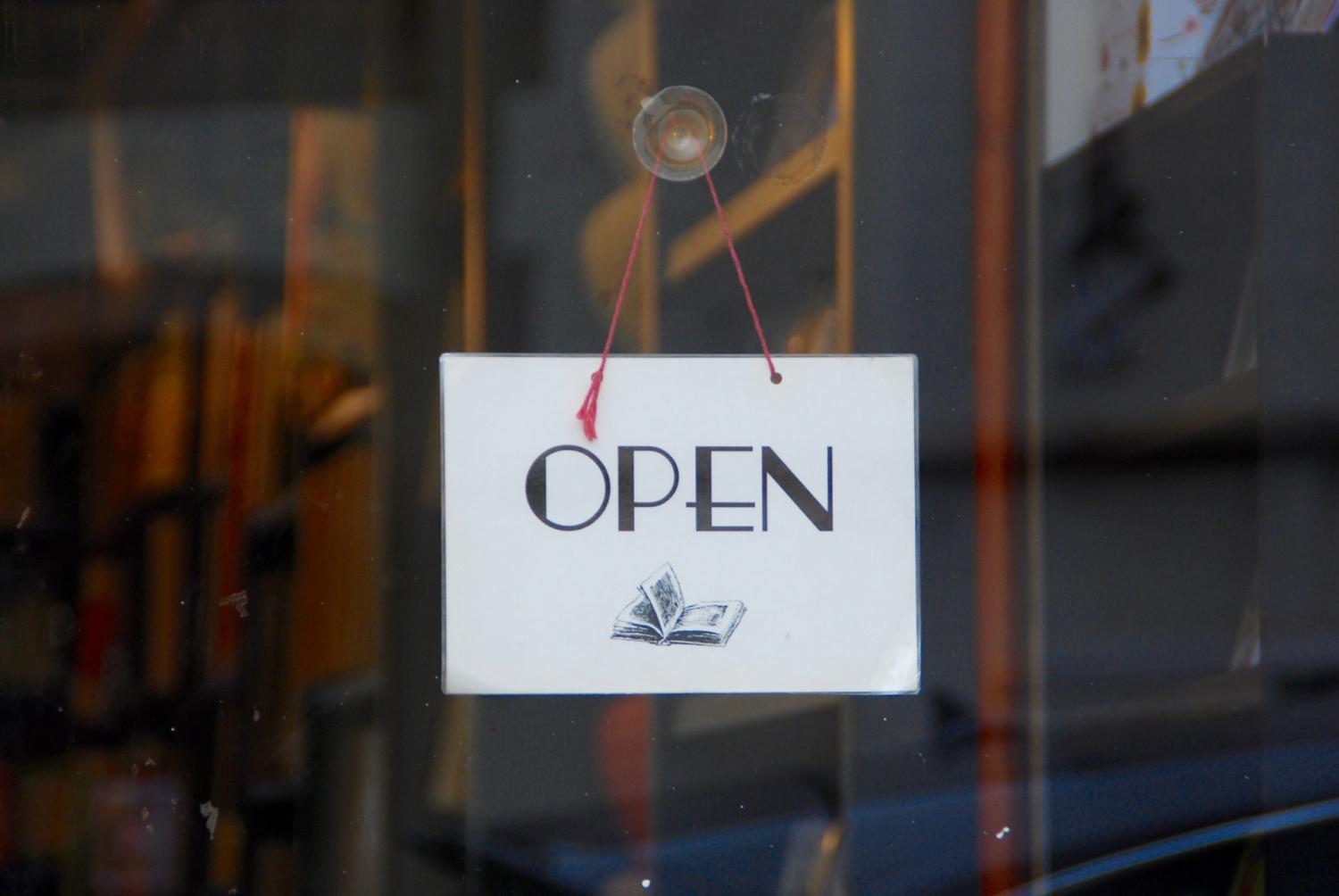

Signs of a business consensus on a green COVID-19 recovery are continuing to grow. In the latest development, the We Mean Business group of 155 leading global corporations has joined with the UN Global Compact and the Science Based Targets initiative to advocate for economic recovery plans based on climate science. The effort is significant because it is the largest UN-backed initiative of its kind to date.
Rallying public sentiment in support of climate action
In addition to highlighting the green profile of the 155 participating companies, the We Mean Business initiative cements a growing network of organizations that have been coordinating businesses leaders on climate action.
The Science Based Targets initiative lists almost 900 participating companies. The We Mean Business coalition includes the nonprofit research organization BSR along with BSR’s 250 corporate members and other partners. Add the green investor group Ceres and its network of 175 institutional investors (among other Ceres networks groups). Finally, enter The Climate Group, which has enlisted scores of leading companies in its roster of renewable energy, energy efficiency and clean technology initiatives.
Other influential organizations that are part of the We Mean Business coalition are The B Team, The Prince of Wales’s Corporate Leaders Group and the World Business Council for Sustainable Development.
Together, the 155 corporations that make up the We Mean Business coalition claim more than $2.4 trillion in market capitalization. Among them are several brands familiar to U.S. consumers including Adobe, H&M, Intuit, Nestlé, Mars and Unilever. That is significant because these well-known brand names provide a pathway for mainstreaming climate action into public consciousness.
In addition, the group employs a total of 5 million workers worldwide. As brand ambassadors and voters, these employees represent another potential avenue of persuasion.
Supporting the science of climate action
In addition to the bottom line factor, another key aspect of the We Mean Business effort is its solid support for climate science, as articulated by the Science Based Targets initiative.
The one-two punch of bottom line motivation and scientific evidence forms an unequivocal rebuke to the decades of effort that fossil fuel stakeholders have poured into blocking climate action.
In a joint letter released by SBTi, the 155 participating companies make the case that the twin crises of COVID-19 and climate change must be addressed together.
“In the face of these inter-connected crises, we cannot afford to tackle one or the other. Human health depends on planetary health,” they write.
The participating companies also emphasize that they are leading by example. All have set corporate emission reduction targets through the Science Based Targets initiative. Now they are asking governments to follow their lead and adopt science-based targets for a COVID-19 recovery.
They point out that they have been “prioritizing green jobs and sustainable growth, protecting nature and people, and delivering on the 2030 Agenda and the Paris Agreement,” by divesting from fossil fuels and investing in innovative low carbon solutions.
The challenge now is speed and scale. For that, they write, “we look to policy-makers to give businesses the confidence and clarity they need to take ambitious climate action.”
Bottom line momentum builds for a sustainable COVID-19 recovery
According to the UN, the We Mean Business joint letter is the “largest ever UN-backed CEO-led climate advocacy effort” to date.
It is far from the only one. On May 13, 330 U.S. businesses organized through Ceres to participate in a virtual day of action, in which they lobbied Congress for a green COVID-19 recovery.
The list of participants included scores of familiar consumer brands in the U.S., from Ben & Jerry’s and Clif Bar to Dow, IKEA and Tiffany & Co.
A number of U.S. states have also begun taking steps to support green jobs in anticipation of a sustainable COVID-19 recovery.
In addition, a public-private initiative for a green COVID-19 recovery in Europe has launched under the new European Alliance for Green Recovery.
In a previous era, recovering from a global economic collapse would necessarily involve an increase in greenhouse gas emissions. Today that connection no longer holds force. Businesses have more sustainable alternatives at hand as they work to foster a COVID-19 recovery plan for sustainable growth, and business leaders are more determined than ever to leave the past behind.
Image credit: Leyre Labarga/Unsplash
As Companies Sing Praises of Remote Work, Employee Engagement Questions Arise


It took insurer Nationwide just two months of seeing the benefits of remote work for its 27,000 employees to decide to make an arrangement forced by a global pandemic permanent. Now it plans to shrink from 20 physical offices pre-crisis to just four. Twitter, meanwhile, has told its employees that they can work from home “forever,” if they want to. As more companies and employees discover the environmental and social benefits of remote work, physical offices may be a lot emptier but productivity and other benchmarks of a successful workplace won’t suffer, say remote work proponents.
For long-time remote workers like myself, it’s “welcome to the party,” and “what took you so long?” According to Gallup, the share of workers reporting that their employers were offering remote-work or flex-time options rose from 39 percent in mid-March to 57 percent in a poll conducted March 30 to April 2. The percentage of working Americans who say they’ve worked from home due to the novel coronavirus doubled from 31 percent to 62 percent over the same period.
So long, gridlock
It’s doubtful that anyone misses their morning commute and the gridlock of rush hour. The photos of empty streets in New York City and other large cities are eerie, yes, but the lack of traffic has meant clearer skies and cleaner air, according to satellite imagery showing drastically reduced emissions of nitrous oxide, a major component of smog. According to Census Bureau data, Americans on average spent 225 hours a year commuting in 2018, which studies have linked to high blood pressure and other negative health consequences.
Those former commuters are now much happier workers, according to a joint CNBC/Change Research survey that found that 47 percent of those surveyed who were working from home during the pandemic said the time they have been spending the time they save on their commute to sleep more, focus on various hobbies and get more work done. The latter point was a key factor for Nationwide’s CEO Kirt Walker, who told Fortune that his newly virtual workforce is as productive as ever: "We've tracked all of our key performance indicators, and there has been no change."
Tech firms lead the way
Twitter is not alone among the tech giants in keeping workers home for a while, as the Washington Post has reported. Google and Facebook have told employees that many workers can do their job remotely should plan to do so until 2021. Amazon has said its headquarters employees will stay home at least until October. Microsoft has told its staff that working from home remains optional through October for most employees.
And it’s not just the tech industry. About 74 percent of CFOs surveyed recently by Gartner expect some of their employees who were forced to work from home because of the COVID-19 coronavirus pandemic to continue working remotely after the pandemic ends. Even NFL coaches and front-office executives whose grueling hours have meant sleeping in their offices are raving about the perks of working remotely this spring as they prepared for the draft and upcoming season. And for people with disabilities, who have long fought for their ability to perform certain jobs remotely, the awakening by the business world to the possibilities of remote work is welcome news.
Some analysts think that remote work will flourish long after the coronavirus pandemic subsides. Use of remote work tools like Zoom, Microsoft Teams and Slack are skyrocketing as they have made collaboration easy and effective. Employers like Nationwide have seen the opportunity in being able to reduce overhead costs for expensive office leases with more employees working from home.
Former Google CEO sees need for more office space
But there are some naysayers to the remote work boom who say, “Hold on a second.” Former Google CEO Eric Schmidt predicts that companies will need more office space after the pandemic, not less. In remarks on "Face the Nation" recently, Schmidt said he thought the desire for social distancing within offices would place a premium on office space. “We're going to have to think about hub-and-spoke systems where local people don't travel so far because they don't want to be in public transit for so long. So we're going to have to really rethink how businesses operate. They need their employees back."
Schmidt said he envisions employers having to devise flexible arrangements, with those who prefer to go to the office, others staying at home, and another group choosing a local or near-their-town working environment. Nationwide’s Walker acknowledged, in fact, that the company will end up with a hybrid model since about 25 percent of its workforce says they want to come back.
But a trend has been set in motion, with Mondelez announcing earlier this month it doesn’t need all its global offices and Barclays CEO Jes Staley saying crowded corporate offices with thousands of employees “may be a thing of the past.”
Remote work not an equal-opportunity employer
But it’s important to note that remote work isn’t an option for everyone. Two-thirds of U.S. jobs cannot plausibly be performed at home, according to a recent study by the University of Chicago. While a majority of jobs in finance, corporate management, and professional and scientific services can be done at home, very few jobs in agriculture, hotels, retail or restaurants can be done remotely. These industries employ many of the workers deemed “essential” during the global health crisis.
With the serious health threats of a pandemic hanging in the balance, that makes some workers very fortunate—and others not so lucky. They may be forced back to work under uncertain circumstances out of fear of losing their jobs. Many states have characterized a refusal to return to work over concerns about the virus as "voluntary quits" that will halt their unemployment benefits. For many, a face-to-face economy is going to continue to be their reality. In fact, remote work has been found to worsen inequality by mostly helping high-income earners.
If companies are to avoid this kind of two-tiered economy, with remote work available to some but not others, it’s worth having a conversation about how the private and public sectors can work together to reduce inequalities so that more workers in the age of COVID-19 can reap the benefits of remote work.
Image credit: Unsplash
How eBay Created a Global Community of Doing Good
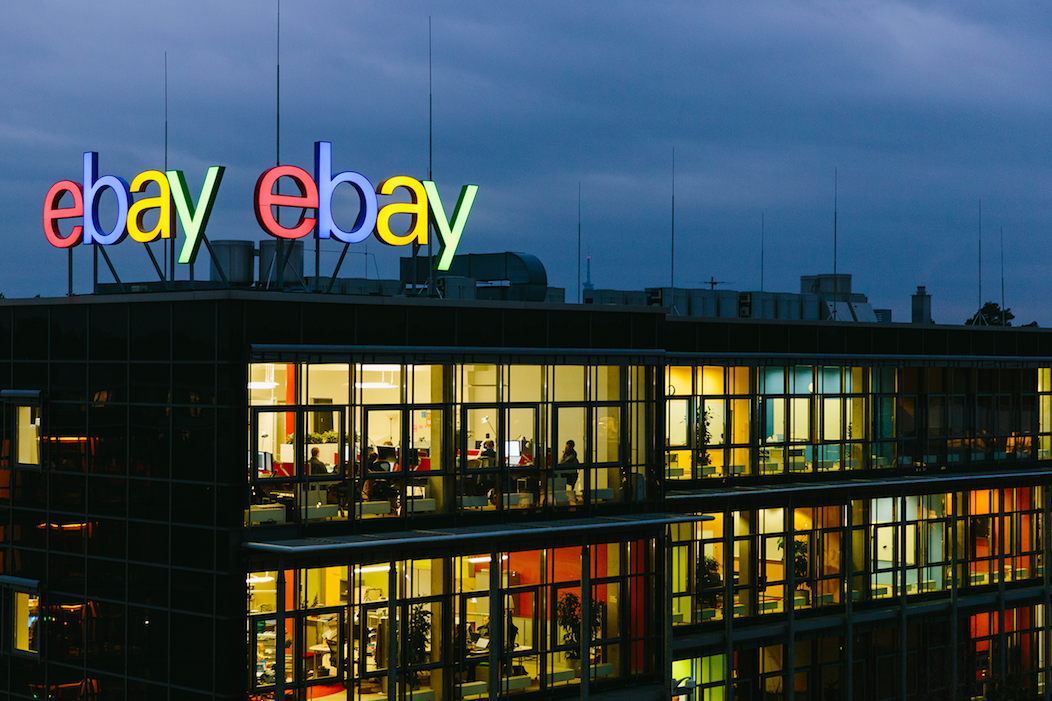
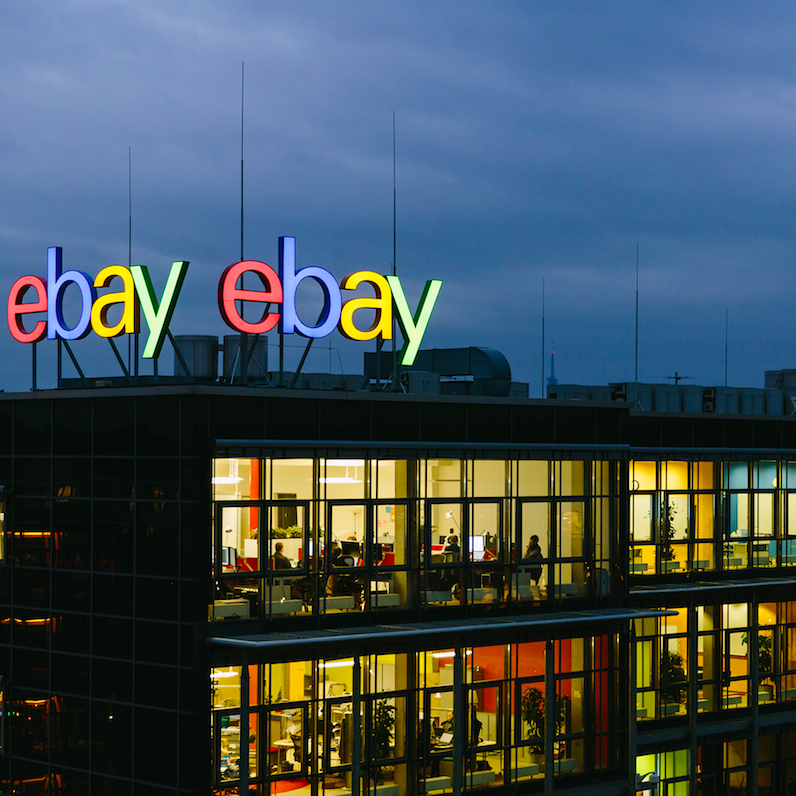
It’s one thing for a company to pivot rapidly during this crisis, give out grants to nonprofits and small businesses, or create a community for stakeholders to pay it forward. It's another to manage all of these response mechanisms at once, and that's what the online marketplace trailblazer eBay has done over the past several weeks.
Like many companies within and beyond the tech sector, eBay was forced to adapt quickly as the novel coronavirus wreaked havoc across society and threw business plans into disarray. But so far, the outlook for the San Jose-based company is bright. Based on its last quarterly results, the Silicon Valley giant has held its own. Revenues dipped a few percentage points compared to the prior year, but not surprisingly, the number of users increased.
Meanwhile, eBay has shown its chops as a strong corporate citizen, and no, we’re not only talking about the company clamping down on price gouging as the COVID-19 pandemic began to reveal its ugly side.
As with many companies, eBay has donated an eight-figure sum in its efforts to contribute to the global COVID-19 relief effort. The total amount increased to $15 million this week with the company’s most recent announcement that would donate an additional $10 million to help with responding to this pandemic in the U.S. and overseas. Nonprofits that are now in a stronger position to help those who need it most include Kiva, Start Small Think Big and the World Health Organization. “With eBay's support, [we] will be able to ensure that small businesses, who are so often left behind, have critical access to the services they need the most now,” said Jennifer DaSilva, executive director of the entrepreneurship empowerment nonprofit Start Small Think Big, in a public statement.
What’s interesting about eBay’s actions during this pandemic, however, is how it has built up a strong legacy of goodwill, which dates back to the early days of the dot-com era. The company quickly became a revelation for consumers who started to use the platform as a means to sell their unwanted stuff. Fast forward almost a quarter century after its founding, and we can see that sense of community still at a strong trajectory. In early April, for example, eBay kicked off Up & Running, a program it designed to help local businesses develop an online presence, and committed up to $100 million in support to assist small companies across North America.
Many of these small business owners are now paying it forward, whether they were longtime eBay resellers or given a lift through eBay’s latest initiatives. Many stories have unfolded, whether they involve donating laptops to students in need or providing meals to kids who suddenly lost access to nutrition programs due to school closures.
The recipe for eBay’s success is formulaic and can be adapted by other companies in different industries: The tech giant made it clear it would work with its resellers to ease financial pain, it took steps so it would be seamless for sellers to join its global response to COVID-19, and as it helped to launch new businesses, it positioned itself as a partner, not an adversary. As such, the Guardian newspaper recently described eBay as enjoying a “lockdown renaissance.” The company’s corporate citizenship streak, however, is unleashed, and in quite a good way.
Image credit: eBay Media Relations
As COVID-19 Pushes More Into Poverty, ‘Day of Solidarity’ Presses for Bolder Action
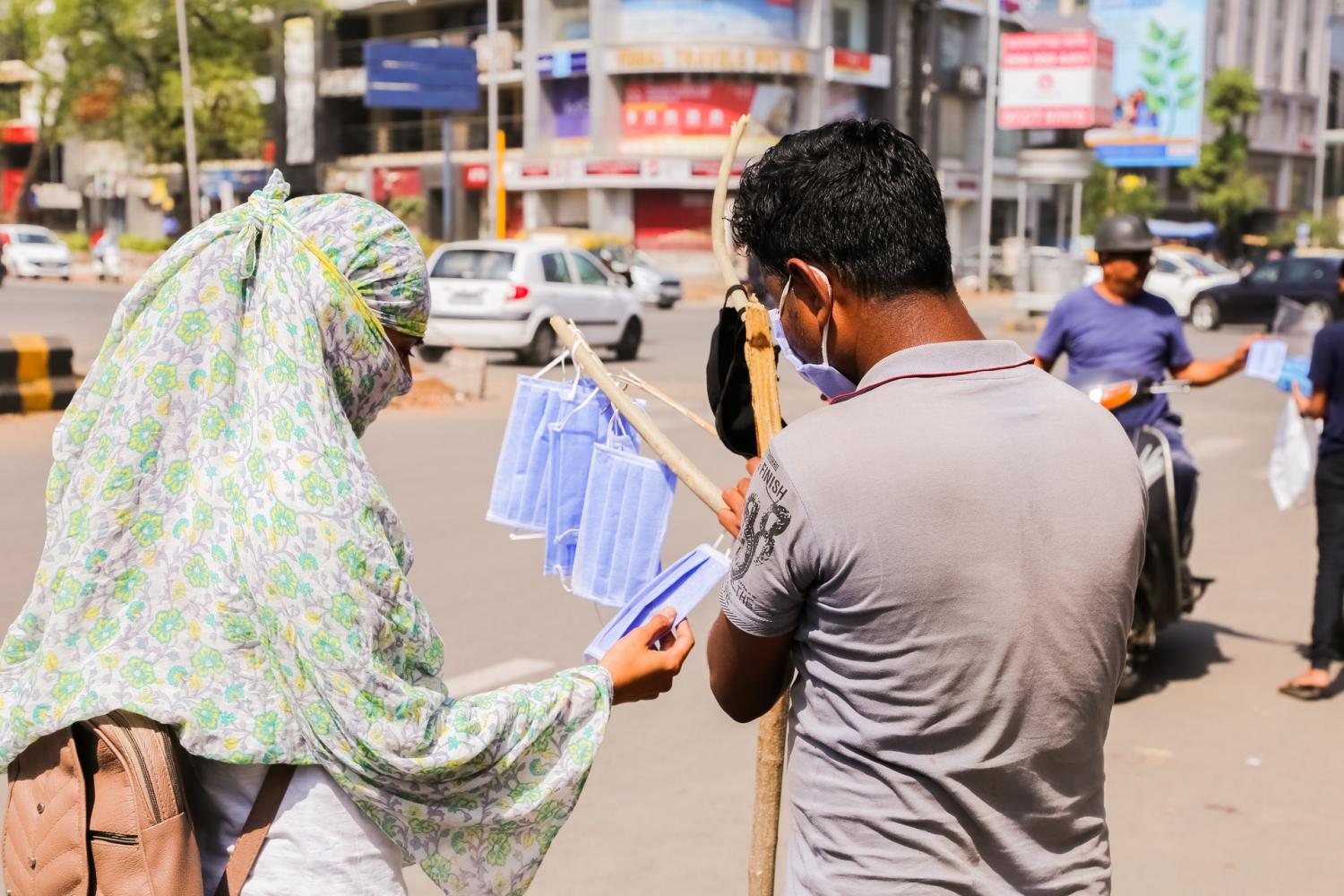

Here’s a day companies could grant their employees a few hours of no-strings-attached paid leave. Be sure to calendar this Friday, May 22: More than 400 NGOs are calling for a Day of Solidarity to highlight bolder community action for those who have been overlooked as the COVID-19 crisis takes its toll. There won’t be local rallies to attend, but there’s plenty of digital action on the agenda.
Organizations mobilizing for this coming Friday include Action for Sustainable Development, Global Citizen, Oxfam and Save the Children.
While the narrative we hear from government officials is often, “the virus doesn’t discriminate,” the evidence suggests the elderly, the working poor, those with underlying health problems, people of color, and women and girls are among the groups at highest risk from suffering from the novel coronavirus – whether they suffer the social and economic impacts or, in the worst case, death.
The long-term effects will be with society for years, as media reports have suggested half a billion people could fall into poverty due to this crisis.
To that end, the NGOs backing Friday’s Day of Solidarity said in a public statement: “We are strongly committed to ensuring that civil society organizations and volunteers play a critical role in supporting community action and ensuring that those who are most often marginalized are not left behind through this challenging time… but we expect world leaders to ensure key measures are addressed to build a fairer future.”
In the corporate world, while there are some business leaders who have stepped it up during this pandemic, so far, the global business community has been better at communicating a response to this crisis than actually executing action to address it.
True, there have been many successful one-off responses to the pandemic, but critics can point to three problems as to why not everyone is agrees the overall corporate response has been effective. The mass layoffs and furloughs say enough, and many companies have either been slow to enact or pushed back against additional pay and protections for essential workers. Finally, evidence suggests that while many working-class and middle-class people are facing financial ruin, the wealthiest at a macro level have become richer during this crisis.
Hence these NGOs are calling on the public to help them take on the COVID-19 crisis. Whether people submit their own ideas, spread the word via social media, write to leaders or sign an online statement, these organizations are calling for a full slate of actions. They include building a fair recovery that ensures universal access to healthcare; eliminating inequality; securing human rights; rebuilding economies; addressing threats to biodiversity and tackling climate change.
This same group also has a 12-point plan that includes efforts it wants to see the United Nations, governments and donor agencies carry forward during this crisis.
One way in which companies could help with this initiative is to give employees some leeway this Friday so they can put their digital might into pushing for more global action to ensure government, the private sector and civil society unite to take on this pandemic. As we’ve seen here in the U.S., a loosely centralize effort has resulted in over 1.5 million cases of COVID-19 and 90,000 deaths. The entire world can do better, and a huge digital effort this Friday could certainly help to raise awareness and push people to expect more from their leaders.
Image credit: Ashok Adepal/Pexels
Amid Oil Price Crash, a New Hope for Biofuels


Long before the COVID-19 crisis hit, the biofuels industry had to answer questions of competitiveness, scale, and impact on land resources. Those questions have been thrown into stark relief now that oil and gas prices have crashed. However, there are reasons to be optimistic about the future of biofuels, as the field continues to evolve remarkably from where it was a decade ago.
Tearing down the plant cell walls for better biofuels
One key development in the biofuels sector involves reshaping basic perceptions about biofuel crops.
Biofuel researchers initially focused on using enzymes to convert the softer, starchy parts of food crops — corn kernels, for example — into glucose, and then into ethanol.
The next step seems logical enough. Rather than letting the rest of the plant go to waste, the focus has turned to developing enzymes that can break down cellulose, the main component of cell walls. That approach also provides for greater use of non-food crops.
The problem is that cell walls also contain lignin, which interferes with enzymes. That opens the door to a third stage, as researchers engineer plants with more cellulose and less lignin.
However, that gives rise to yet another problem. Lignin is important for plant development. Cutting down on lignin could lead to stunted growth, resulting in lower crop yields.
All of this has stymied efforts to relieve the biofuel field from its dependence on corn, soy, and other edible crops.
A more holistic approach to biofuels
Purdue scientist and director of the school’s “C3Bio” biofuel research center Maureen McCann has taken a different approach.
Having studied zinnias, poplar trees and hundreds of other plants, McCann and her team have viewed biofuels through a broad lens that includes fuel, food and other products, such as specialized chemicals.
Within that worldview, they have articulated three holistic goals: increasing the yield per acre, increasing the quality and value of each plant, and increasing the land available for growing crops profitably.
As part of a nine-year Energy Department grant, McCann has been collaborating with chemists and chemical engineers to develop a biofuel system that breaks down both cellulose and lignin with maximum efficiency.
Instead of trying to reduce lignin content, McCann’s approach involves understanding that plants are “marvelous chemists.” Understanding the chemistry is the key to developing new approaches.
For example, one avenue is to engineer plants with looser connections between their cells. Another pathway involves developing plants with catalysts built into their cell walls.
“In both cases, this work is a reflection of synthetic biology thinking. We don't simply take what nature gives us; we think of ways to improve the performance of the biomass using the entirety of the genetics toolkit,” McCann explains.
Unexpected help from “slivers of land”
McCann also participated in a newly released Purdue study that describes how farmers can deploy biofuel crops to help increase the yield of their food crops, while also protecting water resources.
The research team, headed by Purdue professor Nick Carpita, focuses on one solution for two problems.
On the one hand, large scale farmers who can afford nitrogen-based fertilizers get better biofuel crop yields, but they risk damaging nearby water resources. On the other hand, many small hold farmers can’t get better yields because they can’t afford fertilizer.
The solution involves planting perennial biofuel crops, like sweet sorghum or switchgrass, as borders around food crops. These “slivers of land” would serve as buffers to prevent fertilizer from impacting water resources.
Meanwhile, biomass harvested from the perennial border crops would be gasified in order to extract hydrogen, which is the main ingredient in ammonia.
The researchers acknowledge that fertilizer produced by such a system probably could not compete at scale in developed countries, where conventional fertilizer is less expensive. Instead, they foresee application in remote areas or emerging economies where soil quality is poor and fertilizer is unaffordable. They envision a decentralized system of small or mobile facilities that bring fertilizer production technology to the farmer.
“Farmers producing more high-value horticultural crops would see a boost in income and a multiplying effect increasing economic development in rural communities,” explains researcher Gary Burniske, who is the managing director of the Purdue Center for Global Food Security.
Who needs land for biofuel crops?
Using land for biofuel crops is just one option. Researchers are also exploring the use of ponds and constructed waterways to grow algae for biofuel. In one especially interesting development, the US Department of Energy is funding a study that deploys captured carbon to grow algae biofuel crops.
Similarly, another Energy Department initiative involves harvesting seaweed for biofuel.
All in all, the drop in oil and gas prices has created a competitive nightmare for biofuel producers today, but that is only temporary. As the urgency of climate action accelerates, next-generation research is already creating space for biofuel crops in the sustainable economy of the future.
Image credit: Diane Helentjaris/Unsplash
Can Working Remotely Lead Us to a Cleaner World?
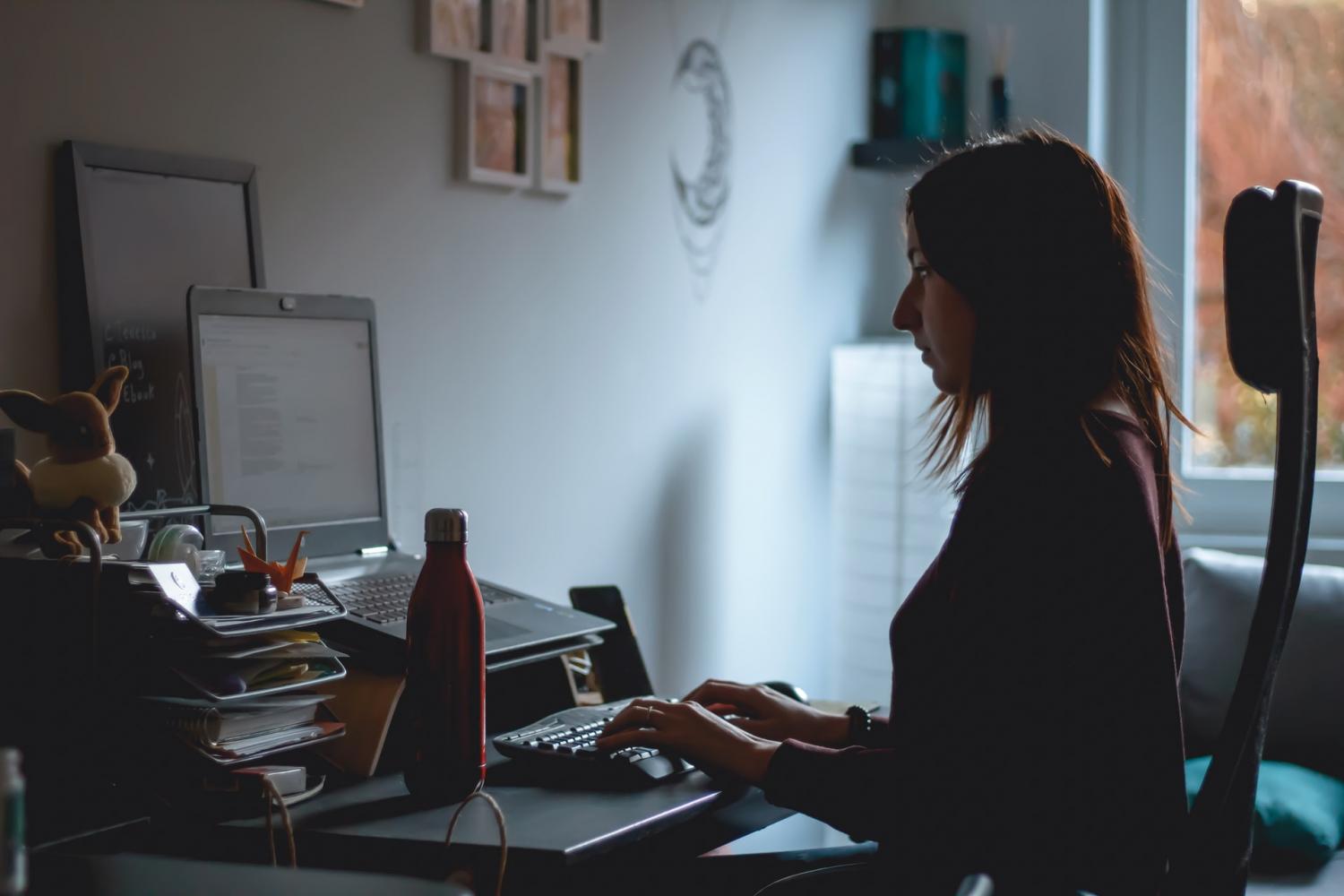

The streets are quiet. With offices closed and communities dark under the lingering threat of the coronavirus, daily commutes across the country have ground to a halt. The roads are empty; our cities quiet but for socially-distanced foot traffic and the lone, occasional vehicle. It’s eerie, but the openness also feels almost like a breath of fresh air in the springtime. Despite these frightening circumstances, the quiet compels us to wonder -- would the environment be better off if across the world, working remotely became the norm?
Over the last few weeks, cities have changed in ways that most people wouldn’t have thought possible before COVID-19 began. In LA, the infamous traffic gridlock has all but disappeared as more citizens began working remotely. According to reports from NPR, the city has seen 59 percent fewer accidents since the municipal government ordered people to self-isolate and limit travel to essential trips. The benefit to the local environment has been equally profound. Reporters for Curbed noted that LA is currently experiencing the longest continuous period of clear air since recording began in 1980, with “the region’s notorious smog [...] nowhere to be found.”
This pattern of environmental gain repeats across the globe. In Venice, canals appear to be running clearer than they have in decades; in China, social distancing restrictions led to a 25 percent, year-over-year drop in China’s carbon dioxide emissions over a four-week period in January. Analysis completed by Finland’s Centre for Research on Energy and Clean Air found that Chinese industrial operations fell by 15 percent over those four weeks, while coal consumption at power plants plummeted by 36 percent.
“This is the first time I have seen such a dramatic dropoff over such a wide area for a specific event,” Fei Liu, an air quality researcher at NASA, told reporters for CNN of the recent environmental changes in China. "I am not surprised because many cities nationwide have taken measures to minimize the spread of the virus."
Not surprising maybe -- but the implications of what these changes teach us about a world gone remote are incredibly significant.
Climate change is one of the most pressing challenges faced by the global community today. If left unchecked, it will reverse years of hard-won developmental progress and, according to research presented by the UN, exacerbate threats to food and water availability and, in the long term, incite conflict over those resources. As one Harvard expert in biodiversity loss and climate change shared in an article for the University’s School of Public Health, “even a small global temperature increase could lead to troubling consequences, like rising sea levels, population displacement, disruption to the food supply, flooding, and an increase in infectious diseases.”
Near-imperceptible as global warming might seem to be in everyday life, its impacts can be both drastic and pervasive. The drastic positive changes that we have seen in recent weeks offer hope that reversing the environmental harm and staving off the consequences of global warming may not be as impossible as we might have thought only a few months ago.
Of course, the task won’t be easy, either. Any measures that we take to preserve the environmental gains achieved during the pandemic will need to be balanced alongside our economic priorities. The global financial situation is dire; according to early estimates published by Statista, most major economies will lose 2.4 percent or more of their gross domestic product by the end of 2020. As the research firm’s writers explain for context, “Global GDP was estimated at around 86.6 trillion U.S. dollars in 2019 – meaning that just a 0.4 percent drop in economic growth amounts to almost 3.5 trillion U.S. dollars in lost economic output.” Already, more than 22 million Americans have filed for unemployment.
Economic activity inevitably comes at an environmental cost. A thriving city consumes resources by default; millions of people need to drive to work, power their business operations, and go about the energy-consuming, emission-creating activities of everyday life. The environmental cost is particularly substantial in countries that rely heavily on their industrial operations. While China, for instance, has seen remarkable ecological gains over the last several weeks, the backlash -- or “revenge pollution,” as some experts term it -- from its restarting economy is projected to be extreme.
“In 2009, the Chinese government launched a giant $586 billion stimulus package in response to the global financial crisis -- the majority of which went to large-scale infrastructure projects,” CNN reporter Rebecca Wright wrote in a recent article. “But the resulting explosion in pollution in the following years -- particularly in the "airpocalypse" winter of 2012-2013 -- led to a public outcry which ushered in the Chinese government's first national air pollution action plan in September 2013.” Wright goes on to suggest that China might choose a similar course after the coronavirus crisis comes to an end, and the Chinese government turns its focus to restarting its industrial-dominated economy.
She has a point. Countries need to revitalize their business and industrial sectors; they need to pay the environmental costs required to prompt job growth and regain economic security. Given this, it seems unlikely that the environmental gains we see now will persist in the long term. However, we may still be able to apply a few lessons from this time of crisis to our environmental goals.
While many business pursuits cannot thrive -- or even exist -- as citizens continue working remotely, many are. Statistics from the U.S. Department of Labor indicate that a third of Americans have the capability to work from home. For context, that’s roughly 124 million people who don’t need to contribute to rush-hour emissions. Moreover, studies indicate that even more people and businesses are attempting to make remote work effective in an attempt to thrive despite coronavirus restrictions.
One survey from the law firm Seyfarth collected responses from 550 employers between March 12 and March 16th and found that 67% were taking steps to allow employees to work from home who don’t usually do so. Thirty-six percent were actively encouraging all employees to work from home in some or all parts of the country, and 42 percent were encouraging employees to work from home on a case-by-case basis. What if, at the very least, we can use this as a learning period to figure out how to make remote work effective and accessible?
“Coronavirus is going to expose more people to working remotely than ever,” Greg Caplan, CEO of the teleworking startup Remote Year told Fast Company. “Most people will see that it is very possible and start to grow accustomed to the benefits of [working remotely], including autonomy, no commute, and fewer distractions than open offices. Companies that don’t allow remote work already are going to have to continue supporting it going forward, now that they have proven to themselves that it works.”
We have an opportunity here. Approximately 24 percent of energy-related CO2 emissions stem from transportation. What if we could cut down on car traffic, and drastically lower the emissions we create by doing so? According to a recent article published in the Harvard Business Review, American employees spend roughly 200 hours a year commuting to work, and three-quarters do so alone. If even a small percentage of companies and workers were to embrace working remotely, the change could make a measurable and impactful difference for the environment.
The pro-environment benefits of working remotely could be the silver lining we desperately need in these dark times -- but it’s up to us to bring it to light.
Image credit: Susanna Marsiglia/Unsplash
Three Big Reasons Why Clean Tech Jobs Will Bounce Back


The U.S. economy has been put through the grinder by the COVID-19 crisis and clean tech jobs are no exception. The sector has enjoyed outstanding job growth over the past ten years, which makes the crash all the more painful. However, it would be a mistake to assume that the outlook is gloomy for job growth in sectors including wind power, solar power, energy efficiency, energy storage, electric vehicles and smart grids. That’s because the clean tech field of today is leaps and bounds beyond its position of ten years ago.
First, the bad news about clean tech jobs
Last week, Grist ran the numbers and painted a dreary picture. In just two months, March and April, the clean tech field lost almost 600,000 jobs. That erases all the growth of the past five years, and another 250,000 jobs could fall by the end of June.
Grist cited lockdowns, financing bottlenecks, and supply chain issues as major factors in the downturn.
The situation certainly is dire. However, the clean tech field also has a lot more going for it now than it did 10 years ago.
The deck is already stacked for rapid re-growth. That’s partly because the U.S. Department of Energy has continued to aggressively support clean technology all throughout the Trump administration, including green job training initiatives.
In addition, there are at least three main factors now in play.
1. Big business is bullish on clean power
Ten years ago, a mere trickle of major U.S. businesses was installing rooftop solar panels. Today the business sector is a major driver of the renewable energy market, and solarized rooftops are just the beginning.
Today there are new financial tools and new partnership arrangements that routinely enable businesses to claim credit for massive, utility-scale solar arrays and wind farms.
Businesses seeking renewable energy no longer have to reinvent the wheel, partly thanks to new buying programs developed by utilities. To cite just one example, even as the COVID-19 crisis gripped the U.S., General Motors launched major solar agreements with Michigan utility DTE and the Tennessee Valley Authority. Both deals will support additional solar investment, too.
New third-party resources like the Rocky Mountain Institute Business Renewables Center and the EnergySage online marketplace are also now available to help smaller firms transition to renewable energy, too.
Most importantly, businesses are far more organized in support of clean power than they were ten years ago. They organized to support President Obama’s Clean Power Plan in the runup to the 2015 Paris Agreement on climate change, and they kept up the pressure in 2017 with the “We are Still In” campaign.
More recently, a newly formed force of 330 businesses has begun lobbying for a green COVID-19 recovery plan including Adobe, Capital One, Dow, General Mills, Mars, Inc., Microsoft, NIKE, Salesforce and VISA, among others.
2. The technology has vastly improved
Ten years ago, auto manufacturers were still recovering from the EV-1 electric vehicle debacle of the 1990’s. Tesla introduced its first car in 2008, but the Roadster’s six-figure price tag and long charging time were obstacles to mass adoption.
Today, virtually every major auto maker is pivoting to electric vehicles, investing billions in R&D and manufacturing. Costs have dropped, charging times have dropped, battery range has increased, and EV drivers can recharge at home, at work or at a growing network of public stations.
Wind power costs have also fallen off a cliff in ten years. Two leading future growth areas are re-powering existing wind farms with new turbines, and exploiting the nation’s vast offshore wind sector.
On the solar side, the Energy Department is targeting new low-cost perovskite solar technology and floating solar panels among other future growth areas.
Energy storage costs have also dropped as new technology comes into the marketplace. Along with new forecasting and grid management tools, that paves the way for more wind and solar in the grid.
3. Here come the Millennials — and Generation Z
Perhaps the most powerful factor of all is the new generation of younger voters, who recognize climate change as an existential threat.
According to Pew Research Center, the largest voting block by age in 2020 is comprised of Millennials plus the first wave of Generation Z.
In contrast to the situation of ten years ago, these younger voters are coming into political consciousness at a time when the technology for decarbonizing is mature, mainstream, efficient and inexpensive.
The solutions are now at hand, and there are no ready excuses for inaction.
In fact, state level officials were already responding to climate-aware voters and businesses before the COVID-19 outbreak. Bipartisan progress has been occurring even in “red” states that previously set up roadblocks to change. Clean technology has clearly begun to leap the political divide of days past.
In fact, some state and local jurisdictions have already begun planning for their own version of a Green New Deal.
Regardless of federal policy, hundreds of state and local jurisdictions have been leading the way on climate action. They have already established pipelines, networks, and systems for promoting new clean technology — and new clean tech jobs — that did not exist ten years ago.
In sum, the stage has already been set for a green recovery. Building new clean tech jobs on the ashes of the COVID-19 crisis will be yet another step forward in a process that is well under way.
Image credit: Pexels
With Electric Vehicles, Brand Reputation Is Not a Sure Thing


When the topic turns to brand reputation and electric vehicles, the case seems easy enough. Zero emission cars make an important contribution to decarbonization, and that reflects nicely on the auto companies who produce them. However, even the simplest of brand calculations can take an unexpected turn when politics are involved.
The politics of electric vehicles
A case in point is Tesla co-founder and CEO Elon Musk.
Ever a lightning rod for publicity, Musk is largely credited with resurrecting interest in electric vehicles at the close of the Bush administration. He launched the all-electric Roadster sports car in 2008, just a few years after GM pulled the plug on its ill-fated EV-1.
Tesla didn’t hold the field for long, though. Competition began to heat up during the Obama administration, mainly in the hybrid electric field. Along with the popular Toyota Prius, GM re-entered the race with the Volt hybrid, and Ford introduced the C-Max Energi.
Auto industry boosters were also early EV supporters, including NASCAR and the iconic Indianapolis Motor Speedway venue.
Nevertheless, during the Obama administration the political divide dictated that electric vehicles were the enemy. Conservative pundits engaged in a steady drumbeat against the new technology, despite strong support within the auto industry.
The political lines could not have been clearer. Electric vehicles were the choice of blue-state Democrats, while red-state Republicans continued to champion traditional vehicles.
Tesla targeted in electric vehicle war
By 2014, the us-versus-them attitude was so influential that some drivers acted out bullying behaviors on the road. Specifically, some diesel drivers began deploying a “rolling coal” modification to blanket Teslas and other electric cars in smog. Others blocked access to Tesla’s public charging stations.
The bullying behavior continued after Trump took office, with Tesla drivers continuing to be a favorite target.
Musk breaks the electric vehicle bubble
The anti-Tesla fervor was more than a little ironic, considering that during the 2016 campaign cycle then-candidate Donald Trump was reported to have a Tesla in his personal collection of high-end cars.
Adding to the irony, Elon Musk very publicly stepped out of the blue state EV bubble to support the new U.S. president when he took office in 2017. Partly thanks to his aggressive use of Twitter, Musk caught more than his share of media attention when he agreed to join the President’s newly formed manufacturing council. He also took heat for endorsing former ExxonMobil CEO Rex Tillerson for Secretary of State.
The relationship appeared to cool when Trump pulled the U.S. out of the Paris Agreement on climate change, but that was only temporary. In 2018 Musk again drew attention for joining top Republican donor Sheldon Adelson in support of a PAC aimed at protecting the Republican majority in Congress.
Musk’s SpaceX venture has also provided ample motivation to maintain cordial relations with the White House. That is a two-way street. The success of the SpaceX program happens to intersect with the president’s pet space projects, including travel to Mars and creation of the new “Space Force.”
Asked about Musk during the World Economic Forum in Davos earlier this year, Trump enthused about the SpaceX program and asserted that Musk is “one of our great geniuses.”
Turning Trump voters into Tesla fans
Trump’s support for Tesla took on a more definitive shape on April 14, when he announced the newly formed “Great American Economic Revival Industry Groups” aimed at developing plans for re-starting the economy. He named Musk among the 12 CEOs tapped for the manufacturing group.
Interestingly, the big three auto makers were also represented in the group. In fact, nine of the 12 the manufacturers were involved with electric vehicles to one degree or another, including Caterpillar, Deere & Company, Cummins, Emerson Electric and General Electric as well as Fiat Chrysler, Ford, General Motors and of course, Tesla.
By all appearances, Musk and other electric vehicles stakeholders were working collaboratively toward a carefully coordinated restart date, reportedly set for Monday, May 18.
However, the appearances were wrong. Less than two weeks after the Great American groups were announced, Musk began pressing for a quick restart. In an April 29 earnings call reported by The Drive, he spoke against the extension of lockdown rules, calling it “forcibly imprisoning people in their homes against all their constitutional rights”
On May 1 he turned up the heat on Twitter, writing “Now give people back their FREEDOM” among other thoughts.
Officials in Alameda County, California, had been working with Tesla on a May 18 reopening plan for its Fremont facility, but Musk launched a ferocious attack on Twitter demanding an earlier opening.
The result was a blinding blitz of free publicity, during which Musk restarted his factory in Fremont, California days before Ford and GM were set to open.
If the idea was to re-assert Tesla’s image as a maverick bucking the entrenched industry tide and bureaucrats alike, Musk certainly succeeded on that score.
He may have also sought to deflate widespread criticism of his attempt at delivering ventilators. Musk’s effort came up short of GM’s ventilator production in Indiana, which was publicly recognized by Vice President Mike Pence and other White House officials during an April 30 factory tour.
One-upping GM with a factory tour by the president himself may have also been on Musk’s agenda — and he might just succeed.
Last week the president tweeted his approval of Musk’s tactics over the Fremont opening, writing that “California should let Tesla & @elonmusk open the plant, NOW. It can be done Fast & Safely!”
If things continue in this vein, it seems that Musk may accomplish the seemingly impossible task of turning Trump voters into Tesla buyers.
Musk has already drawn attention for downplaying the dangers of COVID-19, fighting over public health policy, and pressuring employees to return to work early, all of which could help to endear the Tesla brand to supporters of the President.
For the rest of the car buying public, though, that kind of brand reputation may not the one they’d like to see parked in their own driveway.
Image credit: Taun Stewart/Unsplash